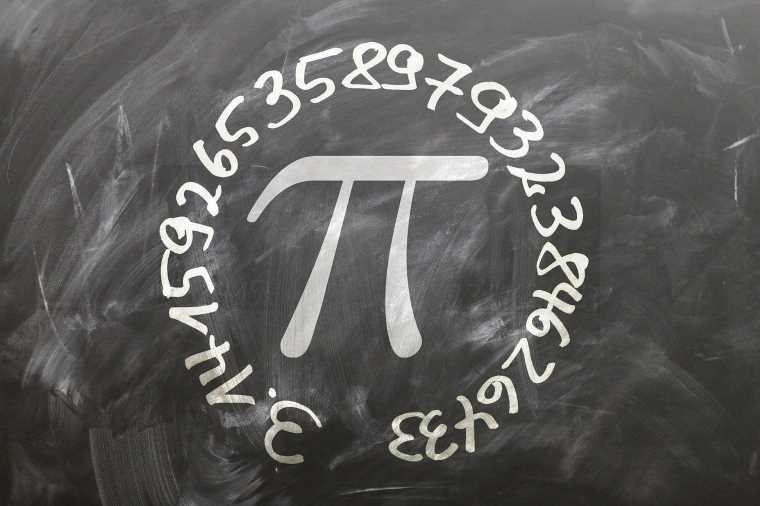String theory scientists studying the behavior of high energy particles say they have stumbled upon a mathematical “hack” that revealed a whole new way to represent the irrational number Pi. While the research is purely theoretical, the duo behind the Pi hack says this kind of theoretical work holds rewarding potential.
The researchers also believe their work could lead to a number of potential breakthroughs in the future, similar to how theoretical breakthroughs made by physicists nearly a hundred years ago resulted in technological advancements decades later.
After 4,000 Years, Pi is Still A Mystery
Defined as the ratio of a circle’s circumference to its diameter and often represented with the symbol π, the earliest written representations of Pi date back to around 1,900 BC and 1,50 BC in Babylon and Egypt, respectively. Still, although the concept of Pi itself is rather straightforward, mathematicians have struggled for centuries to calculate the number accurately, leading to Pi being classified as irrational.
Unfortunately for modern scientists, Pi is often needed when performing calculations related to a wide range of scientific inquiries, including disciplines as disparate as chemical engineering and aerospace design. In these cases, scientists often use a mathematical “series” to represent Pi instead of a rounded-off approximation like the 3.14 most people are familiar with. According to the researchers behind this latest discovery, “if pi is the “dish” then the series is the “recipe.”
Still, those representations have limitations, leaving researchers continually searching for a more accurate and efficient way to represent this irrational number. Now, Arnab Saha, a postdoc, and Aninda Sinha, a Professor at the Centre for High Energy Physics at the Indian Institute of Science (IISc), say they have stumbled upon a whole new way to represent Pi. If proven, it may offer scientists a whole new method for using the number in complex calculations.
Accidental Discovery Occurred During High-Energy Physics Research
Surprisingly, the team behind the potentially historic discovery says they weren’t even searching for a new representation of Pi. Instead, they were working on an aspect of String Theory that involved calculating the interactions of high-energy particles.
“Our efforts, initially, were never to find a way to look at pi,” Sinha explained. “All we were doing was studying high-energy physics in quantum theory and trying to develop a model with fewer and more accurate parameters to understand how particles interact.”
According to Sinha, it was during this process that he and Saha stumbled upon a whole new way to represent Pi, with the researcher noting, “We were excited when we got a new way to look at Pi.”
While the mathematics of the discovery are rather complex, the team says they are not the first to glimpse this new representation of Pi. Instead, they say that their representation “closely reaches” a representation made in the 15th century by Indian mathematician Sangamagrama Madhav. The team also says that 20th-century researchers also got close to their discovery but simply lacked the tools necessary to take their solution to the finish line.
“Physicists (and mathematicians) have missed this so far since they did not have the right tools, which were only found through work we have been doing with collaborators over the last three years or so,” Sinha explains. “In the early 1970s, scientists briefly examined this line of research but quickly abandoned it since it was too complicated.”
To make their historic discovery, Sinha and Saha say they “clubbed together” two firmly established mathematical tools known as Euler-Beta Functions and the Feynman Diagram. According to the press release announcing the discovery, “Euler-Beta functions are mathematical functions used to solve problems in diverse areas of physics and engineering, including machine learning, [while] The Feynman Diagram is a mathematical representation that explains the energy exchange that happens while two particles interact and scatter.”
As hoped, combining these tools resulted in an efficient model to help explain the particle interactions the team was studying. However, when confirming their calculations, they noted that the combination also netted something completely unexpected: a whole new way to represent Pi.
“The series that Sinha and Saha have stumbled upon combines specific parameters in such a way that scientists can rapidly arrive at the value of pi,” the press release explains, “which can then be incorporated in calculations, like those involved in deciphering scattering of high-energy particles.”
Purely Theoretical Discovery Could Offer Unseen Benefits in the Future
While the work, published in the journal Physical Review Letters, is still purely theoretical, the team believes its new representation of Pi could help scientists across a wide range of disciplines, if not immediately.
For example, Sinha noted that 20th-century researcher Paul Dirac began his work on the mathematics of the motion and existence of electrons way back in 1928. However, Dirac didn’t live to see how his findings ultimately provided clues to the discovery of the positron and then to the design of Positron Emission Tomography (PET), which lets doctors scan the human body for diseases and abnormalities.
The team also points out that scientists can still enjoy the pure aspects of theory. As far as Sinha is concerned, that can be its own type of reward.
“Doing this kind of work, although it may not see an immediate application in daily life, gives the pure pleasure of doing theory for the sake of doing it,” the researcher said.
Christopher Plain is a Science Fiction and Fantasy novelist and Head Science Writer at The Debrief. Follow and connect with him on X, learn about his books at plainfiction.com, or email him directly at christopher@thedebrief.org.

